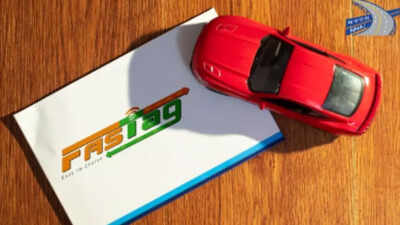NHAI simplifies KYV process for FASTag users: Know the recent implications, step-by-step vehicle verification and how to apply |

The National Highways Authority of India (NHAI) has simplified the Know Your Vehicle (KYV) process for FASTag users to make it more convenient and user-friendly. Under the revised guidelines from Indian Highways Management Company Limited (IHMCL), users no longer need to upload side photographs, with only a clear front image of the vehicle showing the number plate and FASTag required. Vehicle details can now be automatically fetched from the Vahan database, and users with multiple vehicles linked to one mobile number can select the relevant vehicle for KYV completion. Existing FASTags will remain active unless complaints of misuse arise, while issuer banks will send reminders and assist users facing difficulties. This initiative ensures a smoother, hassle-free experience for National Highway commuters.
Understanding KYV (Know Your Vehicle) and its recent guidelines
KYV, or “Know Your Vehicle,” is a mandatory compliance process introduced to ensure that each FASTag issued in India is correctly linked to the specific vehicle for which it is intended. The process requires vehicle owners to submit their vehicle registration details, including registration number and chassis number, and upload clear photographs of the vehicle showing the FASTag affixed. The goal is to prevent misuse of FASTags, such as using tags on the wrong vehicle, carrying loose tags, or having multiple tags for the same vehicle. KYV is repeated every three years to keep the database updated and accurate.
KYV process recent guidelines by NHAI
Previously, completing KYV required multiple photographs of the vehicle, including side images, along with manual entry of registration details. Under the new guidelines as per PIB, recent KYV implementation for FASTag users:
- Simplified process for convenience
The National Highways Authority of India (NHAI) has simplified the KYV process to make it easier for FASTag users. The goal is to enhance customer experience while ensuring accurate verification of vehicles.
- No service disconnection for non-compliance
Under the new guidelines, FASTag services will not be stopped immediately for users who have not yet completed KYV. Users will have sufficient time to complete the process without facing penalties.
- Reduced photo requirements
Users no longer need to upload side photographs of their car, jeep, or van. Only a clear front image showing the vehicle number plate and FASTag is required.
- Automatic vehicle details fetching
When entering the vehicle number, chassis number, or mobile number, the system will automatically fetch RC (registration certificate) details from the Vahan database. This reduces manual entry and simplifies the process.
- Handling multiple vehicles per mobile number
If a single mobile number is linked to multiple vehicles, users can select the specific vehicle for which they want to complete the KYV.
- Existing FASTags remain active
FASTags issued before the KYV policy will remain active, unless complaints are received regarding loose tags or misuse, ensuring uninterrupted toll payments.Issuer banks will send SMS reminders to users who have not yet completed KYV, prompting them to complete the process on time.
- Bank support for difficulties
If users face issues uploading documents or completing KYV, the issuing bank will proactively contact them and assist in completing the process before any service disconnection occurs.Users can also contact the National Highway Helpline number 1033 to lodge complaints or raise queries about KYV-related issues with their issuer bank.
- Objective of the simplification of KYV
These measures are part of NHAI’s commitment to enhance user experience, strengthen the FASTag ecosystem, and provide a smooth and seamless experience for all National Highway users across the country.These changes make the process quicker, simpler, and less cumbersome for users.
How to complete your KYV process: Step-by-step guide
The Know Your Vehicle (KYV) process is mandatory for all FASTag users and must be repeated every three years. It involves the following steps:
- Vehicle documentation submission
Upload your Vehicle Registration Certificate (RC) through your FASTag issuer’s official app or website portal. Some banks also allow submission at their branch offices if digital upload is not feasible.Take a clear front image of your vehicle showing the FASTag and optionally a side image showing the tag and axles, and submit it via the same issuer app or portal.When uploading, you’ll be prompted to enter your Vehicle Registration Number (VRN) and chassis number, which links your FASTag to your vehicle automatically.The issuer bank verifies all uploaded details against the VAHAN database and your registered mobile number. The verification happens automatically in the backend.Once verified, your FASTag remains active. Tags that fail KYV verification are deactivated, and the bank is supposed to notify you via SMS or email before doing so.
KYV support and continuity for the existing FASTag
FASTags issued prior to the revised KYV policy will remain active unless complaints are lodged regarding loose tags or misuse. This ensures uninterrupted toll payments while users complete the KYV process.Some users may face difficulties while uploading documents or verifying vehicle details. In such cases:
- Issuer banks are required to proactively contact the user and assist in completing the KYV process before any disconnection occurs.
- Users can also lodge complaints or raise queries via the National Highway Helpline Number 1033, which connects to their issuer bank for support.
- This ensures that all users can complete the KYV process without facing unnecessary inconvenience or disruption of FASTag services.






